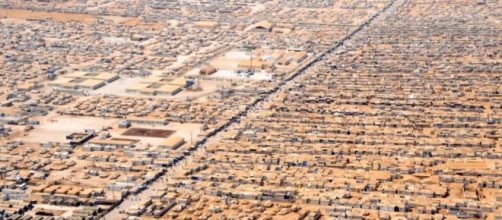The refugee crisis has enveloped much of the world as people try to flee from war torn regions such as Syria and Iraq in an attempt to survive. In many areas, they are met with fear and suspicion, with many viewing them as a Trojan Horse risk. Nowhere is this more apparent than in the world’s largest refugee camp, Dadaab in Kenya.
Terrorism fears run deep
The Kenyan government has long alleged that terrorist organization al shabaab has been using the camp as a base to launch attacks. They claim that the notorious group has infiltrated the nearly 600,000 refugees, and that the 2015 deadly attack at Garissa University, regarded as Kenya’s 9/11, could trace its roots back to Dadaab.
The Garissa attack had a death toll of 148, with another nearly 7 dozen confirmed injured. Seizing on the heightened fear following the attack, the government sought the closure of several refugee camps -- including Dadaab -- despite the lack of evidence that anybody at the camp had anything to do with the incident. But fears and emotions have run high in recent years, and nativism is taking hold across the world, with Kenya being no different.
Al Shabaab is primarily based in neighboring Somalia, and attacks within Kenya are becoming more and more commonplace -- and much bolder. Just last month, the group even attacked a military base directly, emboldened by recent successes across the region.
But the refugees at Dadaab mostly consist of civilians fleeing the instability in Somalia, not Islamists.
Valid concerns?
Still, the risk is present of radicalization within the camp, and the Kenyan government is intent on throwing the babies out with the bathwater. Not only did they order the camp closed, which is really more of a city at this point, but they are planning to build a wall that would make even President Trump blush, along their border with Somalia.
But the move to close the camp was seen as harsh and unnecessarily punitive, and the fact that hundreds of thousands of innocent people were to be uprooted from their homes, some of whom have been there since the early 1990s when the camp first opened, raised concerns about civil liberties and the safety of innocent women and children.
The move was challenged in court, and subsequently blocked on Feb. 9 as unconstitutional.
The fight continues
The Kenyan government isn’t backing down, however. Vowing to appeal the decision, they are continuing to move forward with plans to round up the refugees and expel them from their homes as soon as they can. The plan was to take place over a period of six months, with most of the refugees slated to return to the desolate and war-ravaged Somalia -- even those who came over as babies or who were born within Kenya’s borders.
"After months of anxiety because of the camp closure deadline hanging over their heads, increasingly restrictive asylum options and the recent US administration suspension of refugee resettlement, the court's judgement offers Somali refugees a hope that they may still have a choice other than returning to insecure and drought-ridden Somalia," said Human Rights Watch’s Laetitia Bader in a statement.
For the time being, the closure plan is on hold pending the appeal. But humanitarian groups and civil rights activists are promising to hold strong and protect the weary refugees who have already survived much displacement and hardship.

